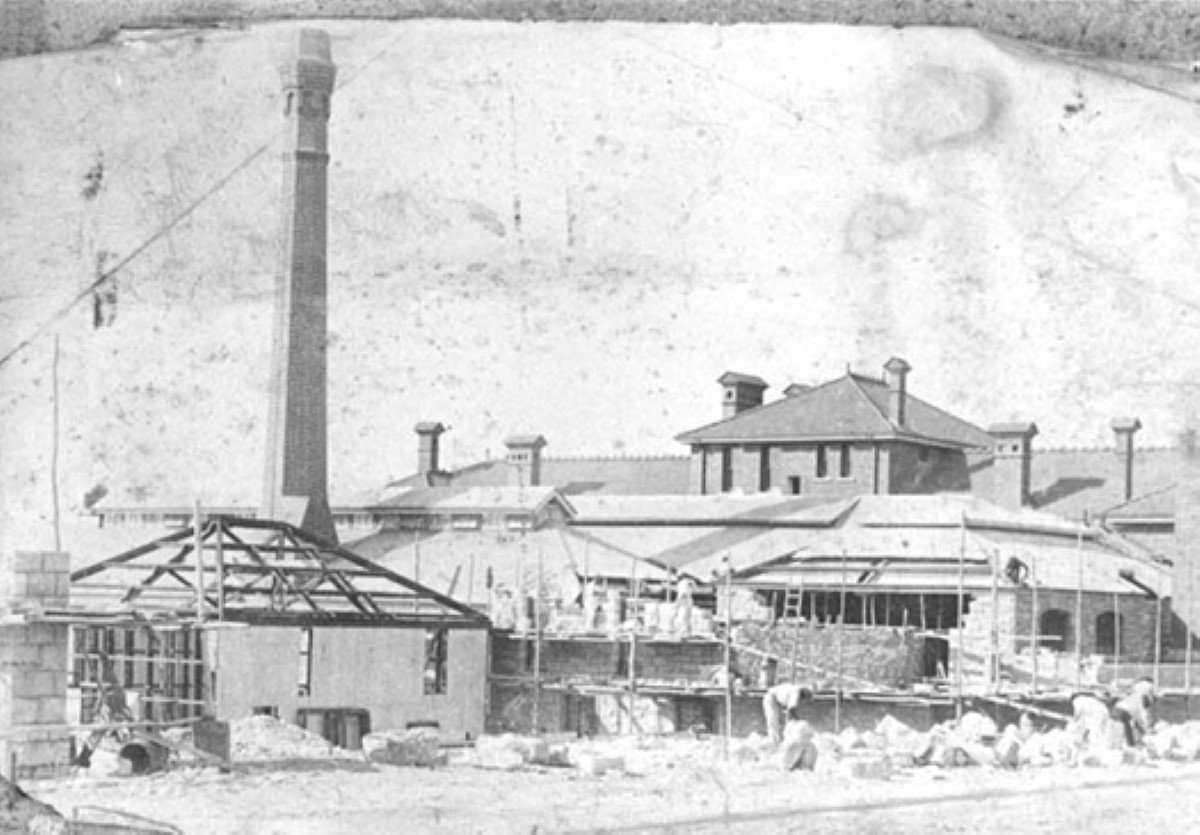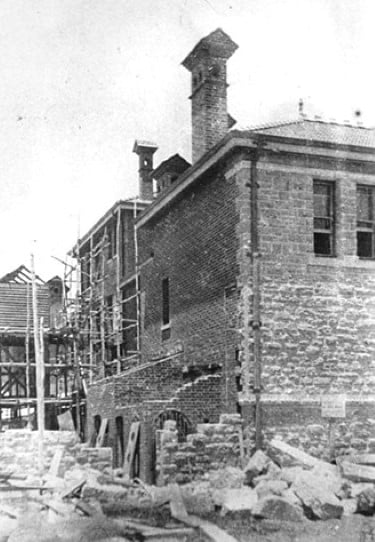The Perth Mint overcomes early challenge to mark 120 years
Our 120th anniversary on 20 June presents an opportunity to recount a story that may sound astonishingly familiar.
Today, it’s all but inevitable that major construction projects will become embroiled in delays and cost-overruns. Long has it been so – as The Perth Mint, which opened in 1899, can attest.
At the end of the 19th Century, the colony of Western Australia was blessed with one of the greatest gold discoveries the world has ever known. Thanks to the determination of Premier John Forrest, permission was granted by the Imperial authorities to build an official branch of The Royal Mint in Perth so the rich finds could be processed locally.
The benefits to WA’s fledgling economy were seemingly assured – and the race was on to build the new facility as quickly as possible. But initial progress was slow and frustration soon set in.
The Perth Mint under construction circa 1897.
The contract for the new Mint was signed on 12 June 1896 at a cost of £22,000, with construction originally expected to be complete within 12 months.
In Federation Romanesque style befitting an institution of such significance, the building was to be a limestone-faced structure roofed with Marseilles terracotta tiles.
It would contain the offices and the residences of the two principal officers. Behind it would be work-rooms, mostly brick or stone, roofed with galvanised iron.
But the Public Works Department, which was responsible for the project, was accused of being ‘vacillating and incompetent’ by Governor Sir Gerard Smith.
Compounding the difficulties were the designs which had been drawn up with a projected capacity to mint one million gold coins annually. Owing to the rapidly increasing output from the burgeoning gold fields, this figure was soon revised – drastically – to three million coins!
A new completion deadline of 13 April 1898 came and went to the extreme frustration of those anxious to see sovereign coins being produced from the colony’s gold.
The keys to the main building were finally delivered seven months late, but a new problem had already been identified. Regrettably, vibrations from trams running along Hay Street interfered with the accuracy of the balances in the first floor assay room – an issue that was exacerbated further once the rolling machines became operational.
With tempers fraying, the Deputy Master John Francis Campbell demanded that new assay rooms must be provided “if the Mint is to ever be anything but an architectural ornament to the city”.
The expansion of the Mint’s production capacity before it was even open was now to include new offices designed to counter the influence of vibration. The solution, it seems somewhat obvious, was a solid concrete foundation under the new floor!
At last there was light at the end of the tunnel. “We hope if things go on as they are doing now to open in May/June 1899,” Campbell reported.
On the other hand, the project was heading towards a massive budget blow out. By the time of the official opening in June, £58,256 had been advanced by the government – presenting the Mint with the sizeable task of repaying the colony’s capital outlay.
Today, The Perth Mint is fully owned by the Government of Western Australia and continues to pay its own way, contributing valuable revenues to both State and Federal governments derived from refining, minting and investor solutions.
Recognised as a global leader in the modern precious metals industry, it distributes products and services worth more than AUD 18 billion annually throughout 130 countries.
Like other famous construction projects dogged by problems during the course of their delivery, The Perth Mint was destined for success. Looking back, the persistence and determination of those who oversaw its birth bestowed Australia with a truly golden asset that is looking forward to the next 120 years and even more success.













